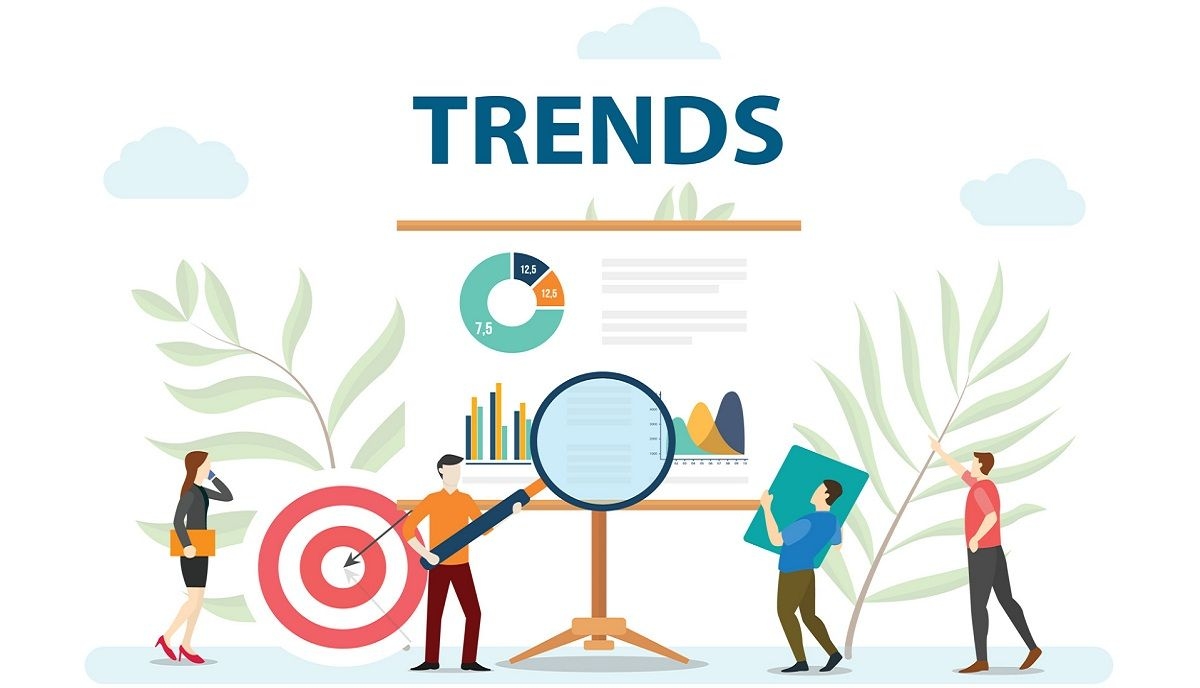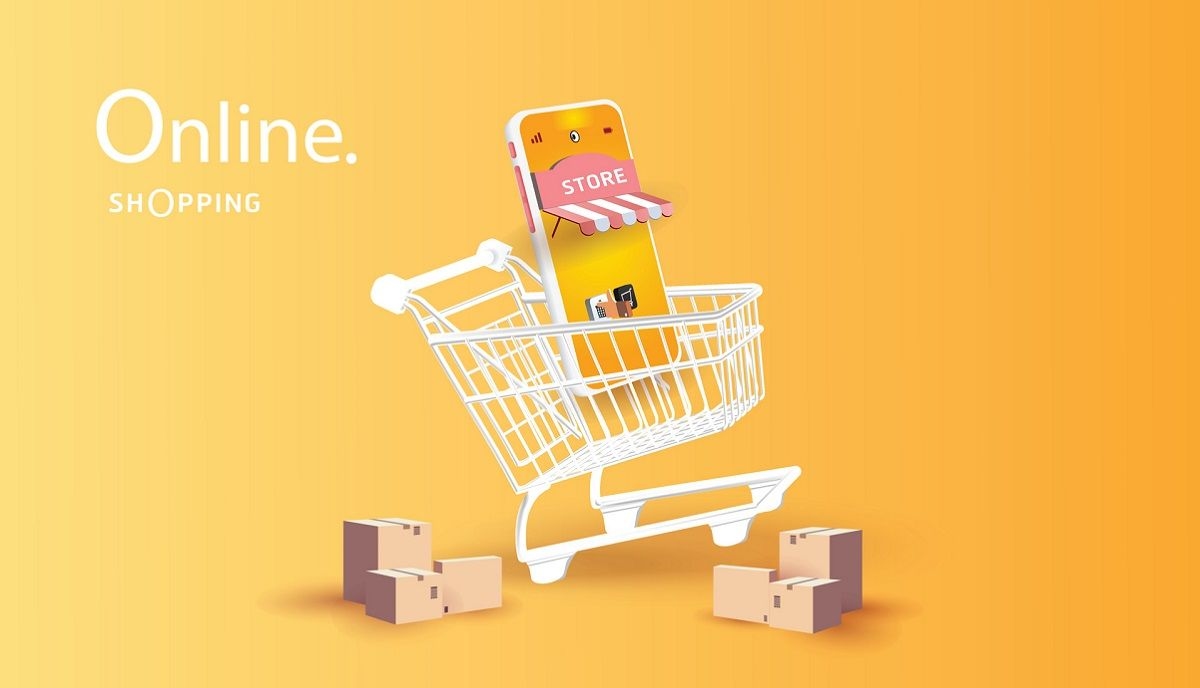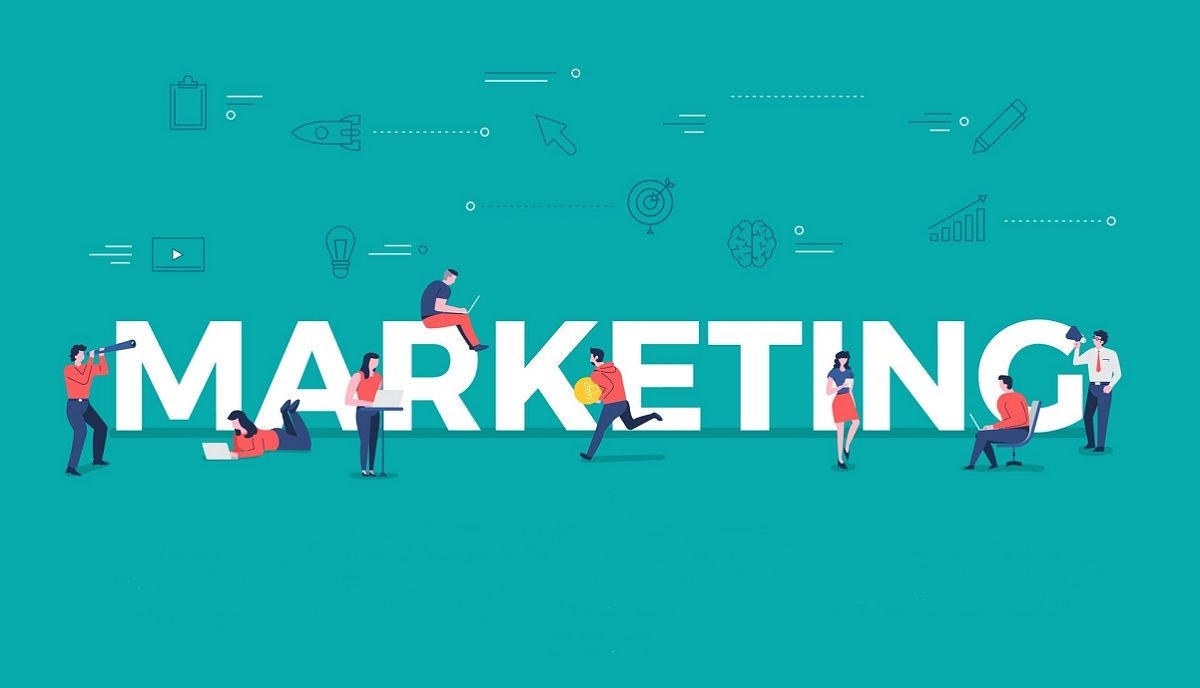Loyalty
Top 16 Ecommerce Trends to Know & Take Advantage of in 2023
Ecommerce is expanding globally, there is no doubt about that. But how fast exactly is it growing? What indust...


Weekly newsletter
No spam. Just the latest releases and tips, interesting articles, and exclusive interviews in your inbox every week.
Authors
Daniela Andreevska
Daniela has 6 years of experience in digital marketing for ecommerce businesses.
Aws Alnabulsi
Aws is the Co-Founder of Coretava, a complete retail ecommerce growth platform. He has 6+ years of experience in managing and growing ecommerce businesses.
Carlos Guerberoff
Head de Parcerias na Coretava. Especialista em desenvolver e fortalecer relacionamentos estratégicos. Orientado para resultados e apaixonado por construir conexões duradouras.
Henrique Letoldo
Head of Sales na Coretava. Com vasta experiência em liderança de equipes comerciais, busca constantemente impulsionar o crescimento e maximizar resultados. Apaixonado por inovação e estratégias de vendas eficazes.
Aws Alnabulsi
CEO e fundador da Coretava. Visionário e empreendedor apaixonado, lidera a equipe com visão estratégica e inovação, buscando transformar o varejo através de soluções tecnológicas.
Ecommerce is expanding globally, there is no doubt about that. But how fast exactly is it growing? What industries are witnessing the biggest growth? What features and functionalities are attracting most interest from customers?
In this article, we’ve collected the 16 top ecommerce trends for 2023 for online marketplace to know and benefit from.
Let’s take a look at what we can expect in the ecommerce industry in the upcoming months.
Table of Contents
- Ecommerce Is Growing Exponentially
- Ecommerce Sales Will Account for a Fifth of Global Retail Sales
- Mobile Shopping Is Overtaking Ecommerce
- Gen Y and and Gen Z Are Driving Ecommerce
- Gen Y and and Gen Z Are Driving Ecommerce
- Shoppable Social Media Posts Bring a Lot of Potential
- Virtual Reality and Augmented Reality Are Becoming an Integral Part of Ecommerce
- Chatbots Are Helping Speed Up Communication
- Interest in Environmental and Other Global Issues Is Rising Among Online Shoppers
- Live Commerce Is Now a Real Thing
- Personalization Is Becoming the Norm in Ecommerce
- Customer Loyalty Is Benefiting Ecommerce Businesses
- Metaverse and NFTs Are Creating New Realities in Ecommerce
- Flexible Payment Options Are in Demand
- AI and Automation Are Leading Ecommerce
- A Possible Recession Might Affect Ecommerce Businesses
1. Ecommerce Is Growing Exponentially
The most important of the current trends in ecommerce is that it is expected to grow quickly over the next few years. According to Statista, global ecommerce revenue will increase from $3.75 billion in 2022 to $5.42 billion in 2022, with an annual growth rate averaging 12%.
These numbers reveal the huge potential that launching an ecommerce store (if you don’t have one) or optimizing an existing store holds for businesses. In other words, if you don’t jump on the bandwagon, you are missing out on a major opportunity to grow your business massively.
2. Ecommerce Sales Will Account for a Fifth of Global Retail Sales
Another ecommerce trend that helps put things in perspective is the fact that online sales are expected to reach 20.8% of all retail sales in 2023, based on Oberlo data. This number will reach 24.0% in 2026.
Based on retailer commerce trends, online shopping is becoming the norm because of the extra benefits that it offers to consumers. For example, fashion and apparel, beauty, personal care, household goods, electronics, travel, entertainment, media, food, and hobbies are quickly overtaken by ecommerce marketplaces. If your business operates in any of these categories, opening an online store is becoming a must.
3. Mobile Shopping Is Overtaking Ecommerce
Mobile commerce, or m-commerce, has become its own branch of ecommerce. According to Tech Jury, 61% of online traffic comes from mobile devices, and 58% of multi-device online purchases are closed on a mobile. Meanwhile, eMarketer forecasts that the share of m-commerce retail sales will increase from 6.5% in 2023 to 8.7% in 2026.
From an ecommerce business perspective, this means that the mobile optimization of e-stores should become a top priority. Everything you do and develop should be done with a mobile-first vision.
4. Gen Y and and Gen Z Are Driving Ecommerce
While Gen X still makes a significant proportion of online shoppers, one of the upcoming trends in ecommerce in 2023 and beyond is that the online shopping importance of Gen Y (millennials) and Gen Z (zoomers) will continue growing. Importantly, these two groups of online customers have very different preferences and concerns from Generation X and baby boomers and even from one another.
Young people born after the mid-1990s put a lot of trust in social media experiences and influencer recommendations. Moreover, sustainability, environmental issues, and other social concerns affect the purchasing decisions of Generation Z more than of any other generation. A First Insight report finds that 73% of Gen Z are ready to pay 10% more for sustainable products.
So, when you work on optimizing your e-store in 2023, you should keep the needs and requirements of Gen Z in mind.
5. Omnichannel Marketing Is a Must
Together with the growth of ecommerce, ecommerce marketing is also becoming an increasingly complex industry. Content marketing, SEO, social media, video, email, SMS, affiliate marketing, influencer marketing, and paid advertising are all expanding to attract more and more online shoppers to the constantly emerging e-stores.
However, another relatively new trend in marketing for ecommerce is omnichannel marketing. Omnichannel marketing refers to the integration of various channels and media in a business marketing and branding strategies.
In 2023, it is not enough to target customers on a single channel, even if it is something as massive as Facebook or Instagram. You should combine multiple channels (SEO, social media, video, ads, etc.) in both your targeting and retargeting campaigns.
Core Marketing can help you optimize your omnichannel ecommerce marketing strategy through customized pop ups, emails, SMSs, quizzes, and games. Click here to learn how.
6. Shoppable Social Media Posts Bring a Lot of Potential
Shoppable posts on social media websites have been another of the recent trends in ecommerce that is only expected to grow in 2023 and afterwards. Recognizing the potential and convenience of purchasing from your social media account, more and more platforms are implementing shoppable solutions for the benefit of both ecommerce businesses and online shoppers.
Instagram, Facebook, Pinterest, and TikTok all offer shoppable social media features. This is an effective and cost-efficient way for enterprises to reach the 2.14 billion online shoppers around the world as the majority of them are available on social media. This has the potential to become a leading B2C ecommerce trend in the near future, especially among Generation Z online customers who trust social media more than anyone else.
7. Virtual Reality and Augmented Reality Are Becoming an Integral Part of Ecommerce
VR and AR are impacting ecommerce trends in a major way. According to Statista data, global revenue in virtual reality and augmented reality will reach $31.1 billion this year, and a significant part of this is going towards online commerce.
Traditionally, the inability to experience and test a product has been a major concern preventing many from choosing online shopping over conventional shopping in physical stores. VR and AR offer a practical, cost-efficient solution to this dilemma.
Ecommerce businesses can offer augmented experiences to their customers by showcasing products and getting the online shopping process as similar to traditional shopping as possible. VR-enabled storefronts will attract not only older customers (who have been more skeptical of ecommerce) but also younger shoppers (who are more technology savvy and driven).
8. Chatbots Are Helping Speed Up Communication
According to a survey among 10,000 US companies over a 5-year period, 81% of online leads get wasted because enterprises do not respond to their inquiries fast enough. In this digital era, 88% of leads expect to receive a response within 1 hour and 30% within 15 minutes.
Chatbots provide a good solution to this need for speed, at least in the initial stages of the lead conversion process. There are plenty of good AI-driven chatbots out there that can be “trained” to respond to customer queries as efficiently as a human being. Make sure that you enable this feature on your online marketplace so that you don’t become one of the majority of businesses wasting internet leads due to slow response times.
9. Interest in Environmental and Other Global Issues Is Rising Among Online Shoppers
As briefly mentioned above, one of the upcoming ecommerce trends for 2023 is the growing demand for products and services that assure sustainability and do not negatively impact the environment or any social group of society, domestically or globally.
This trend is largely driven by the increasing share of Gen Z online shoppers who are particularly environmentally and socially conscious.
So, as a business owner, while you are developing the products or services to sell online, make sure that you keep these issues in mind. It is not only how you sell but also what you sell that determines demand for your product.
10. Live Commerce Is Now a Real Thing
Another trend in ecommerce is the increasingly important role of what is known as live commerce. Live commerce - or live shopping - is an advanced type of ecommerce where shoppers interact with the brand in real time while buying a product or service. The advantages of live commerce include not only enhanced customer engagement and brand awareness but also impulse buying and sales speedup.
The livestream shopping market in the US alone is forecast to reach $68 billion by 2026 and account for as much as 20% of all ecommerce sales globally. As a growing ecommerce business, you don’t want to miss on this opportunity to increase lead conversion.
A few actions that you can apply in 2023 to start building your live commerce strategy is to launch live Q&A sessions with users, one-on-one live video shopping options (this could be a good option to get started and test the waters), and omnichannel livestreaming (this is the most efficient way to reach the most customers simultaneously). You can also partner with influencers within your industry and include them in your live shopping plan.
11. Personalization Is Becoming the Norm in Ecommerce
As the ecommerce industry becomes increasingly more sophisticated, online shoppers expect personalized experiences throughout the shopping journey, from awareness, through consideration, all the way to decision and repeat purchases.
77% of customers want a more personalized experience, and the same percentage report that they have selected, recommended, or paid a higher price for a brand just because of receiving a more personalized product or service. While personalization (including through gamification) is important among all online customers, Gen Z is leading this ecommerce trend as 74% of them show an interest in a personalized shopping experience.
As an ecommerce business that would like to take advantage of recent trends in the industry, you should harness the power of AI tools to customize your marketing strategy based on individual leads’ interests to convert them into customers. Then, you should remember their preferences to supply them with relevant recommendations and benefits to turn them into loyal customers.
Core Personalization can help you automate your ecommerce personalization strategy through recommendations, upselling, AI, and analytics. Click here to learn how.
12. Customer Loyalty Is Benefiting Ecommerce Businesses
Customer loyalty has always been important, long before the launch of ecommerce. However, with the constant emergence of new online brands and e-stores, gaining and retaining the loyalty of existing and new customers becomes an indispensable part of any customer retention and revenue generation strategy.
60% of loyal customers purchase more frequently than otherwise, with the share going up to 70% among Generation X. Furthermore, returning customers spend 33% more than first-time buyers.
Loyalty is among the top B2C and B2B ecommerce trends in 2023. An easy way to benefit from this trend is to launch a customer loyalty program to start retaining more customers and even turning them into brand ambassadors. The most popular customer loyalty program types include rewards, loyalty points, coupons, cashback, tiered program, VIP program, and referral program.
Core Loyalty can help you automate your ecommerce customer loyalty strategy through loyalty points, cashback, VIP, and referral program. Click here to learn how.
13. Metaverse and NFTs Are Creating New Realities in Ecommerce
Another growing trend in ecommerce for 2023 is the growing role of the metaverse. The metaverse is revolutionizing customer experience in ways that were unthinkable until a few short years ago. The metaverse and NFTs bring new opportunities to both boost customer engagement (similar to VR and AR) and drive sales, both virtually and in reality.
Nike is one of the largest brands that has already engaged the metaverse in its ecommerce strategy. Together with Roblox, Nike created Nikeland, a metaverse virtual space where the brand meets fans, socializes with them, and lets them participate in promotions.
The sky’s no longer the limit in ecommerce as brands are taking over virtual spaces to transform digital marketing and customer engagement.
14. Flexible Payment Options Are in Demand
Recent ecommerce trends show an increasing demand for flexibility across the board, including in payment options. Enabling debit and credit card payments, e-wallets, bank transfers, direct deposits, electronic checks, PayPal, cash on delivery (COD), and even cryptocurrency are already the norm in ecommerce payments.
If you want to differentiate your ecommerce store from other marketplaces, you have to consider offering a buy now, pay later (BNPL) method as well. BNPL lending is expected to reach $90 billion in 2023 in the US alone, a huge increase from $3 billion in 2019. The demand is largely driven by Generation Z (46.5% of users) and millennials (39.5% of users). Make sure you take advantage of this trend to get your business ahead of the competition.
15. AI and Automation Are Leading Ecommerce
With so many diverse newly emerging demands in ecommerce, it is easy for a new business to get lost. After all, you have only so many human and financial resources to take care of ecommerce marketing, joining the metaverse, live commerce, personalization, customer loyalty, and everything else.
How do you do all these at the same time with the limited resources you have?
AI and automation is the response to your quandary.
Artificial intelligence is building the future of ecommerce by providing a solution to every challenge and every need that an online shopping platform faces. AI allows businesses not only to put a lot of the required processes on autopilot but also to optimize their results while doing so. No human being or even an entire team of human beings can gather, analyze, and apply the same amount of big data that a simple AI tool can.
Coretava can help you automate your ecommerce marketing, personalization, and customer loyalty strategies to boost performance. Click here to learn how.
16. A Possible Recession Might Affect Ecommerce Businesses
A final - albeit negative - trend that might impact the ecommerce industry in 2023 is a potential recession in the US which will inevitably affect the global economy and trade as well. According to Bloomberg, economists see a 70% chance of a recession hitting the US before the end of 2023. Considering that the Great Recession of 2007-2008 forced 1.8 million small businesses out of the market, this is a major threat looming over the ecommerce space where the majority of enterprises are micro and small.
While the talks about a possible recession should not obstruct your growth plans for 2023, it’s worth incorporating this concern into your business strategy should it actually happen. In addition to your baseline scenario, integrate a pessimistic scenario as well. Have a ready action plan of what you’d need to do in case a recession occurs so that you at least sustain if not grow until the end of the year.
While there is a lot going on in the online shopping space, these are the 16 top ecommerce trends for 2023. All of them - except the last one - offer major opportunities for ecommerce businesses to boost customer acquisition and customer retention by taking advantage of them.
If you need some help in automating ecommerce marketing, personalization, and loyalty, check out how Coretava can help you. Schedule a demo now.
Related Posts

Ready to Transform Your Retail Strategy?
Get a personalized consultation with our retail AI experts
Resources
Contact Us
+1 (415) 830-3900
info@coretava.com
Location
São Paulo, Brazil


